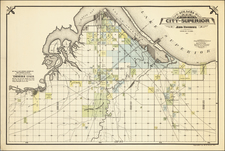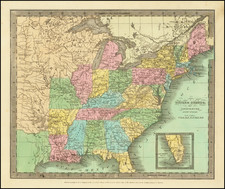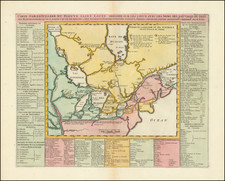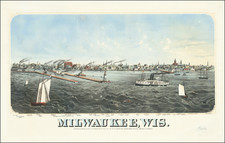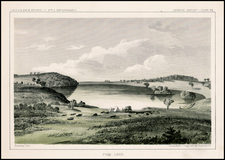Fine early map of the area around Prairie des Chien as it appeared in 1820.
The map shows Fort Crawford and 87 confirmed and unconfirmed claims.
This is the second printing of the map, after an earlier edition by Bowen in 1834.
Prairie du Chien, Wisconsin, was a center of fur trade and commerce in the late 1600s and early 1700s, with French and British traders exchanging goods with local Native American tribes. In the late 1700s, American fur trader and military officer, Jonathan Carver, established a trading post in the area, which became a hub for the growing lead mining industry in the region.
The U.S. was slow to present any authority over Prairie du Chien, but late in the War of 1812, when the government realized the importance of holding the site to prevent British attacks from Canada, it began construction of Fort Shelby in 1814. In July, British soldiers captured the fort during the Siege of Prairie du Chien. The British maintained control over the city until the war's end in 1815. Not wanting another invasion through Prairie du Chien, the Americans constructed Fort Crawford in 1816.
The fort was the site of the negotiations and signing of the Treaties of Prairie du Chien (1825 and 1830), by which the Fox and Sauk ceded much of their land to the U.S. Representing them and the United Nations of the Chippewa, Ottawa and Pottawatomie in the 1829 negotiations was Billy Caldwell, of Scots-Irish and Mohawk descent. He became involved with the Pottawatomie after moving as a young man to the U.S. from Canada.









![[Wisconsin] General Map of the Lead Region Showing the Distribution of the Lodes . . . By James Wilson, Jr. 1880](https://storage.googleapis.com/raremaps/img/small/59314.jpg)
